California Inland Marine Insurance For Electricians
See How We're Different
or call us: 888-988-2347
Types of Contractors We Serve
Jonathan Behr
Owner of Contractor Insurance Pros by Behr Insurance Services
Index
Contact Us
Phone
Location
Simi Valley, CA 93065
The Woodlands, TX 77382
Katy, TX 77494
Electricians in California face
unique challenges in their line of work, from the tools they use to the projects they undertake. One crucial aspect that helps mitigate the risks is Inland Marine Insurance. This
comprehensive guide will delve into what Inland Marine Insurance is, specifically for electricians in California, and how it can protect their businesses.
Understanding Inland Marine Insurance
Inland Marine Insurance is a specialized form of coverage that protects movable property, typically not tied to a specific location. This type of insurance is vital for professionals who frequently transport equipment, machinery, and other valuable assets.
Definition and Importance of Inland Marine Insurance
The term "inland marine" might seem counterintuitive since it pertains to land rather than water. However, the origins trace back to marine insurance covering goods transported over water. Now, it has evolved to encompass transitory property. For electricians, this insurance is important as it protects against losses when equipment is transported between job sites.
It covers items such as tools, equipment, and materials that are essential to an electrician’s work. Given the high value of this property, having adequate insurance isn’t just wise; it’s essential. The financial implications of losing expensive tools or equipment can be devastating, not only affecting the bottom line but also delaying projects and damaging client relationships. Therefore, understanding the nuances of this insurance can help professionals make informed decisions that safeguard their livelihoods.
How Inland Marine Insurance Works
Inland Marine Insurance works by providing coverage for specific risks associated with transporting and storing equipment. When you purchase this type of policy, you can choose which items and scenarios you want to insure against.
Typically, the policy will cover theft, loss, or damage to equipment while it is in transit or temporarily stored. For electricians who operate on multiple job sites, this flexibility and protection represent a significant advantage. Moreover, many policies can be tailored to include additional endorsements that cover specialized equipment, such as generators or high-tech diagnostic tools, which may not be covered under standard property insurance. This customization allows electricians to ensure that every aspect of their operation is protected, providing peace of mind as they focus on their work.
Furthermore, it’s important to note that inland marine insurance is not limited to just tools and equipment; it can also extend to coverage for materials in transit, such as wiring and fixtures. This aspect is particularly crucial for electricians, as delays caused by lost or damaged materials can lead to costly project overruns. By having comprehensive inland marine coverage, professionals can mitigate these risks and maintain their operational efficiency, ensuring that they can meet deadlines and uphold their reputation in a competitive industry.

Specifics of California Inland Marine Insurance
California has unique regulations and standards that affect how Inland Marine Insurance operates. Understanding these specifics can help electricians choose the right coverage for their needs.
State Regulations and Requirements
California mandates specific licensing and safety regulations for electricians, which also extend to insurance coverage. All electricians should ensure their Inland Marine Insurance complies with state requirements to ensure they are adequately protected.
These regulations might include specific coverage limits, reporting requirements, and additional endorsements that may be necessary based on the nature of the work performed. For example, electricians working on high-voltage systems may be required to carry additional liability coverage or endorsements that address the unique risks associated with their projects. Furthermore, staying updated on any changes to state regulations is crucial, as non-compliance can lead to penalties or gaps in coverage.
Coverage and Exclusions in California
When evaluating Inland Marine Insurance in California, it’s important to understand what is covered under a policy and what is excluded. Standard coverage typically includes tools, equipment, and materials while in transit; however, certain exclusions may apply.
For instance, policies may not cover losses due to wear and tear, damage from certain weather conditions, or items left unsecured. Electricians should carefully read their policies and consult with an insurance agent to understand these nuances. Additionally, it may be beneficial to consider optional add-ons, such as coverage for rented equipment or specialized tools that may be used on specific jobs. Understanding the full scope of coverage can help electricians mitigate risks and avoid unexpected financial burdens due to uncovered losses. Moreover, maintaining an inventory of tools and equipment, along with regular assessments of their value, can ensure that the coverage remains adequate as business needs evolve.
Inland Marine Insurance for Electricians
In the electrical trade, having the right insurance coverage isn't merely an option; it is a necessity. Inland Marine Insurance specifically caters to the needs of electricians in unique ways.
Why Electricians Need Inland Marine Insurance
Electricians often find themselves working at various locations, frequently moving equipment and tools between sites. This mobility puts their valuable assets at risk, and without the right insurance, a loss could significantly impact their business.
Moreover, as the industry becomes more reliant on advanced technology and expensive tools, the financial repercussions of damage or theft become even more pronounced. Thus, having Inland Marine Insurance acts as a protective buffer, allowing electricians to focus on their work without the worry of financial setbacks. The peace of mind that comes with knowing your tools and equipment are covered can enhance productivity, enabling electricians to take on more projects and expand their client base.
Risks and Challenges Covered
Various risks can affect electricians, such as theft, accidental damage, or equipment failure while performing tasks. Inland Marine Insurance is designed to cover these very risks.
It safeguards against losses incurred through theft at a job site or during transportation. Additionally, it provides coverage for sudden accidents that might cause equipment damage, allowing business owners to replace tools efficiently without bearing the full financial burden. This is particularly crucial for electricians who rely on specialized tools like multimeters, wire strippers, and conduit benders, which can be costly to replace. Furthermore, Inland Marine Insurance can also extend to cover equipment that is rented or leased, ensuring that electricians are protected even when they do not own the tools outright.
Inland Marine Insurance can also address the unique challenges posed by weather-related incidents. Electricians often work outdoors, and adverse weather conditions can lead to unexpected damages. For instance, a sudden storm could damage equipment left on-site or during transit. By having comprehensive coverage, electricians can mitigate the risks associated with unpredictable weather, ensuring that their operations can continue smoothly even in the face of nature's challenges. This adaptability not only protects their assets but also reinforces their reputation as reliable professionals who can handle projects under various circumstances.
Choosing the Right Inland Marine Insurance Policy
Selecting an appropriate Inland Marine Insurance policy requires careful assessment and consideration of various factors specific to an electrician's needs.
Factors to Consider When Choosing a Policy
When evaluating potential insurance policies, electricians should consider several critical factors:
- Coverage Limits: Assess the maximum coverage limits and whether they align with the value of your equipment.
- Deductibles: Determine what you can afford in terms of deductibles. A lower premium may mean higher deductibles.
- Additional Endorsements: Look for coverage options that may enhance your policy, like coverage for specific types of equipment or liability insurance.
Reviewing these factors can help you find a tailored policy that effectively meets your operational needs and risks. Additionally, it is wise to consider the geographical areas where you operate. Certain regions may have unique risks, such as higher rates of theft or natural disasters, which could impact your insurance requirements. Understanding these local factors can help ensure that your policy provides adequate protection against potential losses.
Tips for Comparing Insurance Quotes
When receiving quotes from various insurers, it’s crucial to compare not only the price but also the terms and conditions. Here are some tips for effective comparison:
- Understand the coverage each policy provides—focus on both inclusions and exclusions.
- Request quotes that are as similar as possible to make a fair comparison.
- Look for customer reviews or ratings for each insurance provider to gauge their service quality.
Taking these actions can lead you to the most beneficial policy for your needs. Furthermore, consider the reputation of the insurer in terms of claims handling. A company that is known for prompt and fair claims processing can save you considerable stress and financial strain in the event of a loss. Engaging with fellow electricians or industry professionals can also provide insights into which insurers are regarded as reliable and responsive, helping you make an informed decision.

Filing a Claim: What You Need to Know
If the unexpected happens, knowing how to file a claim correctly can save both time and hassle. Understanding the process in advance helps ensure you can quickly recover your losses.
Steps to Filing an Insurance Claim
Filing a claim with your Inland Marine Insurance involves a series of steps that are crucial for ensuring a successful outcome:
- Document the Loss: Take photographs and make a detailed list of the lost or damaged property.
- Notify Your Insurer: Contact your insurance company immediately to report the loss.
- Submit Required Documentation: Provide all requested information, including receipts and photos, for processing.
Being thorough in your documentation can expedite the claims process and increase the possibility of approval. Additionally, keeping a copy of all correspondence with your insurer, including emails and notes from phone calls, can be beneficial should any disputes arise later in the process. This organized approach not only aids in clarity but also demonstrates your diligence and commitment to resolving the matter efficiently.
Understanding the Claim Process
The claims process can vary by insurer but generally involves an adjuster evaluating the situation. They will review your documentation, conduct an investigation, and determine the payout based on the policy terms. It's also useful to familiarize yourself with the specific terms and conditions of your policy, as this knowledge can empower you during discussions with your adjuster.
It’s important to be patient, as the review and approval process can take time. Staying in touch with your insurance agent can help keep you updated on your claim's status. Additionally, if you feel that your claim is taking longer than expected, don't hesitate to ask for clarification on any delays. Understanding the reasons behind the timeline can alleviate frustration and help you plan your next steps more effectively. Remember that open communication with your insurer can often lead to a smoother claims experience and provide you with peace of mind during a challenging time.
Frequently Asked Questions About Inland Marine Insurance
Many electricians have questions concerning Inland Marine Insurance. Understanding the common queries can help alleviate concerns and clarify what this type of insurance entails.
Common Queries About Inland Marine Insurance
Some frequently asked questions include:
- How much coverage do I actually need? The required amount of coverage often depends on the value of your tools and equipment.
- Can I add coverage for specific items? Yes, many insurers offer endorsements to provide coverage for certain high-value items.
Addressing these questions can pave the way for better decision-making when securing insurance coverage. It's also important to regularly assess the value of your tools and equipment, as this can change over time. Keeping an updated inventory can help ensure that your coverage reflects your current needs, allowing you to avoid potential gaps in protection.
Myths and Misconceptions Debunked
There are several misconceptions about Inland Marine Insurance that can deter electricians from obtaining it. For instance, many believe it’s only for maritime professions or that it’s not necessary for small businesses. In reality, Inland Marine Insurance plays a significant role in safeguarding all businesses that transport valuable property, including electricians.
Knowing the truth behind these myths can help electricians see the real value in securing comprehensive Inland Marine Insurance. Additionally, many electricians work on various job sites and often transport their tools and equipment from one location to another. Without the right coverage, they could face significant financial losses if their property is damaged or stolen while in transit. This type of insurance not only protects against theft but also provides coverage for accidental damage, ensuring that electricians can focus on their work without worrying about the potential risks associated with their valuable equipment.
Conclusion: Safeguarding Your Electrical Business
Inland Marine Insurance is not just an additional expense; it's a beneficial investment that helps protect your electrical business from unexpected losses.
The Role of Insurance in Your Business Strategy
Incorporating Inland Marine Insurance into your business strategy shows commitment to protecting your assets. It enhances your credibility with clients, providing them with the assurance that you are responsible and prepared for potential risks.
Additionally, having robust coverage can save you time, resources, and money should an unforeseen incident occur. It allows you to take risks in your projects without the fear of losing everything in the process.
Final Thoughts on Inland Marine Insurance for Electricians
Ultimately, Inland Marine Insurance is a vital part of an electrician’s business landscape, particularly in California. By understanding your needs, choosing the right policy, and staying abreast of state regulations, you can effectively protect your business operations.
Safeguarding your valuable tools and equipment ensures your focus remains on providing quality service to your clients, making Inland Marine Insurance a wise investment for any electrician. With the right coverage, you can work with confidence, knowing you're covered against unforeseen setbacks.


